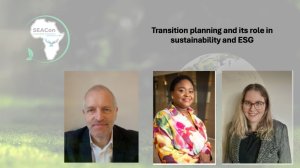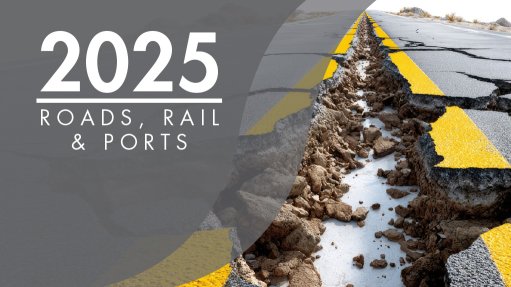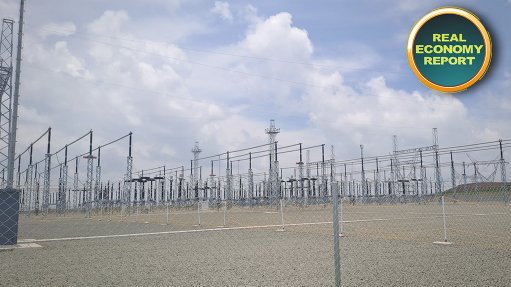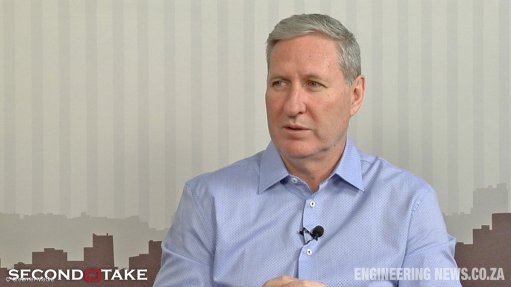Transition planning is the missing link in ESG strategy

In a recent webinar hosted by the Sustainability and ESG Africa Conference and Expo, industry experts laid out a compelling case for why transition planning must become a standard business practice and not just a regulatory box tick
As sustainability commitments deepen and climate disclosures tighten, transition planning is emerging as a cornerstone of resilient business strategy.
In a recent webinar hosted by the Sustainability and ESG Africa Conference and Expo, industry experts laid out a compelling case for why transition planning must become a standard business practice and not just a regulatory box tick. Framed as both a strategic imperative and a mechanism for unlocking sustainable finance, transition planning is rapidly gaining traction among businesses, investors and regulators alike.
“Transition planning is about identifying risks, setting ambitions, and turning those into concrete actions. It is a way for companies to protect and enhance long-term value while contributing to a low-carbon, climate-resilient economy,” explained independent adviser on sustainable finance Mark Manning, who works with companies such as Chapter Zero.
From Reporting to Strategic Integration
For many African businesses, ESG reporting is already a tall order. Add transition planning into the mix, and the concern is overwhelming. But the panel—featuring Manning, Absa’s head of sustainability analytics Mbombo Luhembe and International Transition Plan Network strategic partnerships manager Kate Ryan—emphasised that transition planning is not “yet another document”. Instead, it is an opportunity to consolidate fragmented sustainability efforts into a coherent, strategic narrative.
Ryan framed the process around the “three A’s”: ambition, action, accountability. “It’s about setting a long-term ambition, translating it into short-term, implementable steps and embedding accountability through governance and metrics,” she said.
Transition planning does not exist in isolation. It fits within the reporting frameworks businesses already use, such as the International Sustainability Standards Board’s (ISSB’s) new International Financial Reporting Standards S2 standard on climate-related disclosures. Manning noted that the ISSB has adopted much of the Transition Plan Taskforce’s (TPT’s) guidance, further embedding transition planning into mainstream financial reporting.
While regulation and investor expectations are accelerating the adoption of transition plans, the benefits go beyond compliance. According to Manning, embedding transition planning into corporate strategy drives organisational resilience, board-level oversight and stakeholder engagement. “This is not a one-off exercise. It’s dynamic, iterative and must be responsive to new data, market changes and evolving climate risks,” he said.
Luhembe echoed this from a banking perspective. “As a financier, we want to see that companies understand their exposure, are planning for the future, and can demonstrate credible action,” she said. “And in Africa, this planning must account for social realities—energy poverty, unemployment and inequality. Transitioning must be just.”
That sentiment underscores the growing focus on the just transition—the idea that climate action must uplift, not marginalise, vulnerable communities. For African economies, this is not just a value, it is a necessity.
Breaking Silos and Building Skills
Transition planning also has powerful internal benefits. Ryan noted that organisations often discover they are already doing more than they think, but in disconnected silos. “The process itself builds internal alignment and reveals hidden efforts. It encourages collaboration between sustainability, finance and strategy teams,” she said.
The panellists acknowledged that new skills and tools are needed. Scenario planning, stakeholder mapping, climate data analysis, and agile strategy development all form part of the transition planner’s toolkit. Fortunately, guidance is expanding. Resources such as the Transition Planning Toolkit from Chapter Zero and the Transition Planning Cycle from the TPT offer practical support for boards and executives.
Perhaps the most compelling reason for companies to engage in transition planning is its role in attracting transition finance. Increasingly, banks and investors want to back companies that while not yet green, are credibly transitioning.
Luhembe shared that Absa offers financial incentives to clients who present robust, data-backed transition plans. “We’ve already tied funding conditions to climate targets in some of our agreements,” she said.
Global investor surveys echo this trend. One cited during the webinar showed that 63% of respondents would allocate capital to high-emitting companies—if they had credible transition plans. Conversely, the biggest barrier to transition finance was the lack of such plans.
A Tool for Africa’s Future
The panellists agreed: transition planning offers a path forward for African businesses navigating the complex landscape of climate risk, ESG reporting, and sustainability expectations. It helps companies think long-term, build resilience and secure financing, while contributing to a just, inclusive transition.
As Manning concluded, “We’ve focused too much on financing what’s already green. Transition planning allows us to finance what can become green, with credibility and integrity.”
For African companies, the message is clear: if you want to lead in sustainability, do not just report. Plan to transition.
Article Enquiry
Email Article
Save Article
Feedback
To advertise email advertising@creamermedia.co.za or click here
Comments
Announcements
What's On
Subscribe to improve your user experience...
Option 1 (equivalent of R125 a month):
Receive a weekly copy of Creamer Media's Engineering News & Mining Weekly magazine
(print copy for those in South Africa and e-magazine for those outside of South Africa)
Receive daily email newsletters
Access to full search results
Access archive of magazine back copies
Access to Projects in Progress
Access to ONE Research Report of your choice in PDF format
Option 2 (equivalent of R375 a month):
All benefits from Option 1
PLUS
Access to Creamer Media's Research Channel Africa for ALL Research Reports, in PDF format, on various industrial and mining sectors
including Electricity; Water; Energy Transition; Hydrogen; Roads, Rail and Ports; Coal; Gold; Platinum; Battery Metals; etc.
Already a subscriber?
Forgotten your password?
Receive weekly copy of Creamer Media's Engineering News & Mining Weekly magazine (print copy for those in South Africa and e-magazine for those outside of South Africa)
➕
Recieve daily email newsletters
➕
Access to full search results
➕
Access archive of magazine back copies
➕
Access to Projects in Progress
➕
Access to ONE Research Report of your choice in PDF format
RESEARCH CHANNEL AFRICA
R4500 (equivalent of R375 a month)
SUBSCRIBEAll benefits from Option 1
➕
Access to Creamer Media's Research Channel Africa for ALL Research Reports on various industrial and mining sectors, in PDF format, including on:
Electricity
➕
Water
➕
Energy Transition
➕
Hydrogen
➕
Roads, Rail and Ports
➕
Coal
➕
Gold
➕
Platinum
➕
Battery Metals
➕
etc.
Receive all benefits from Option 1 or Option 2 delivered to numerous people at your company
➕
Multiple User names and Passwords for simultaneous log-ins
➕
Intranet integration access to all in your organisation



















